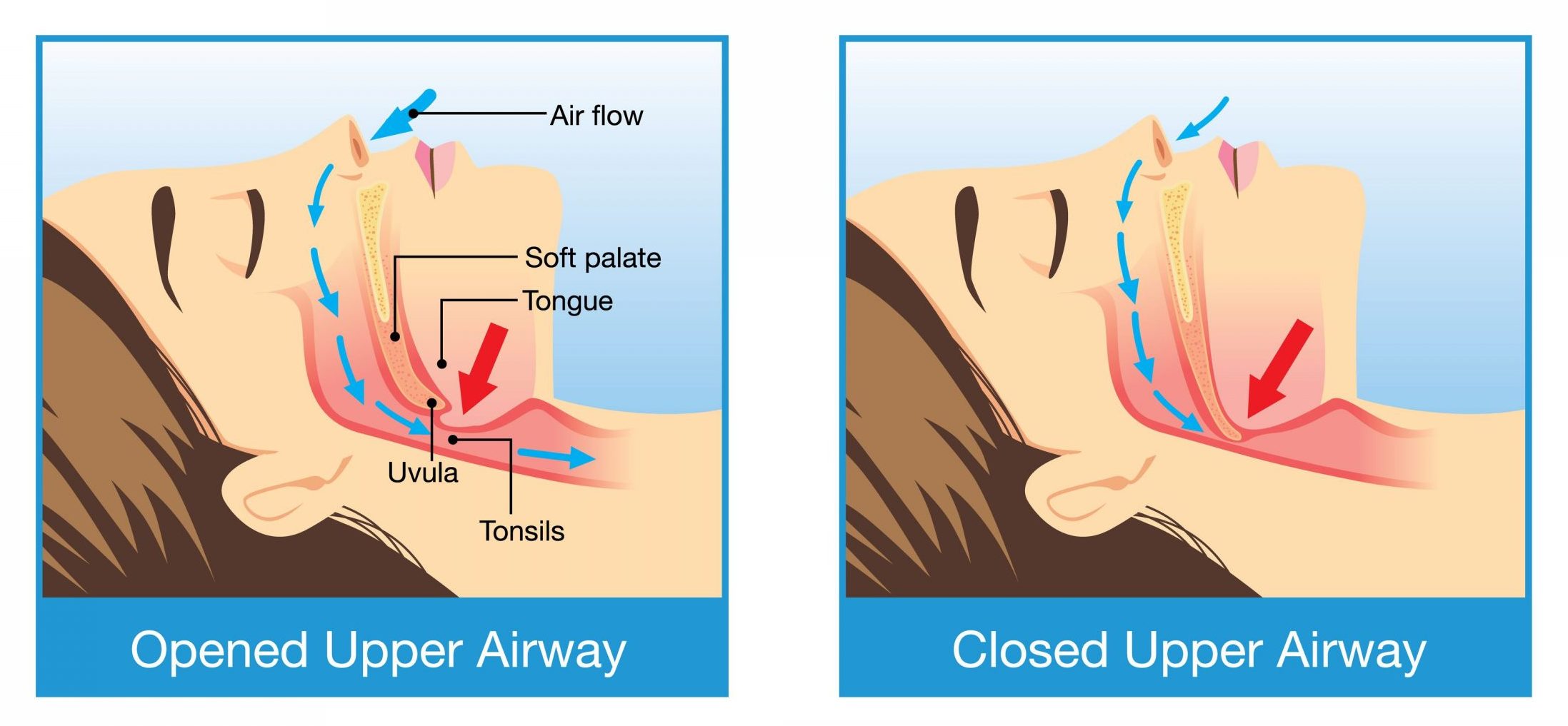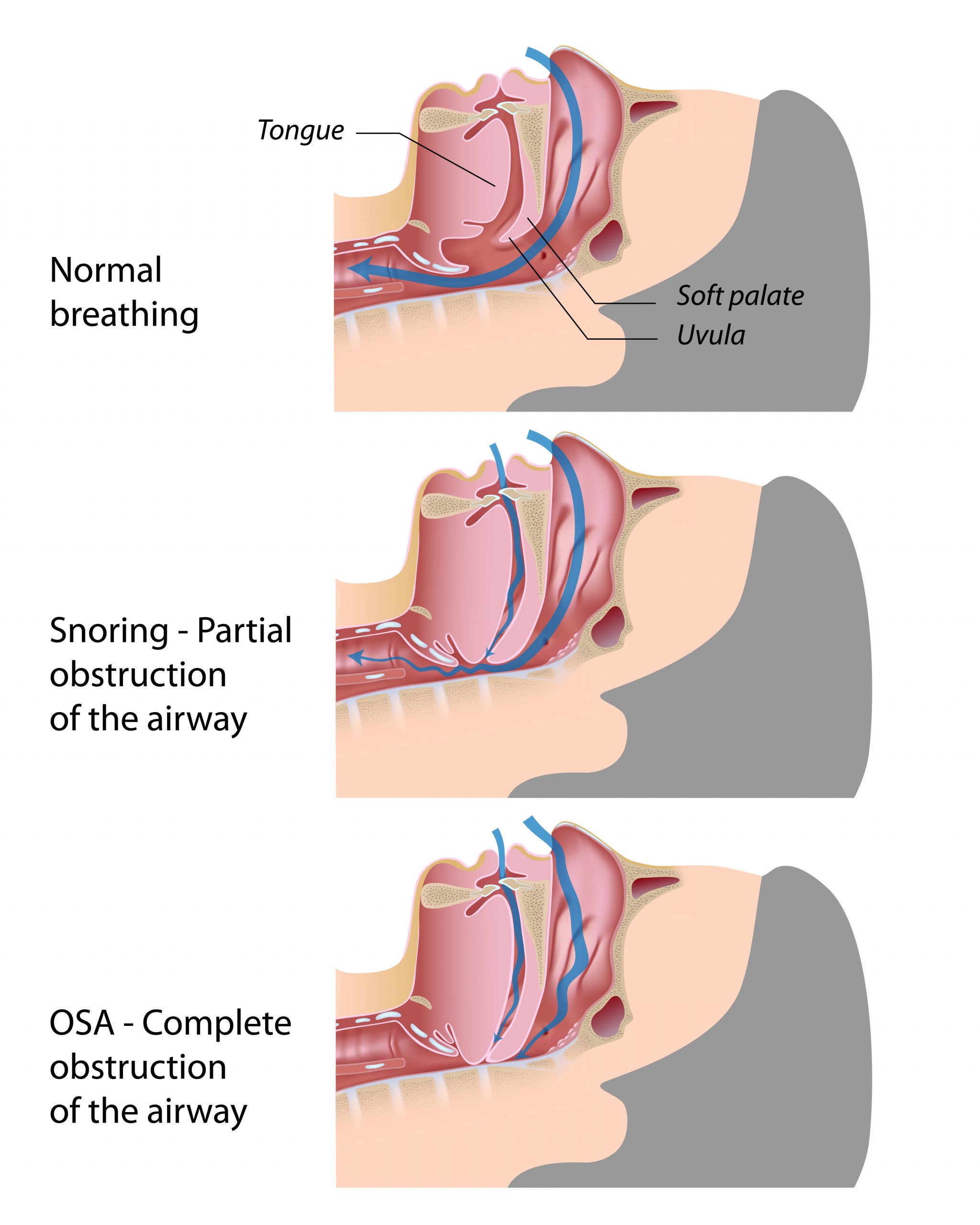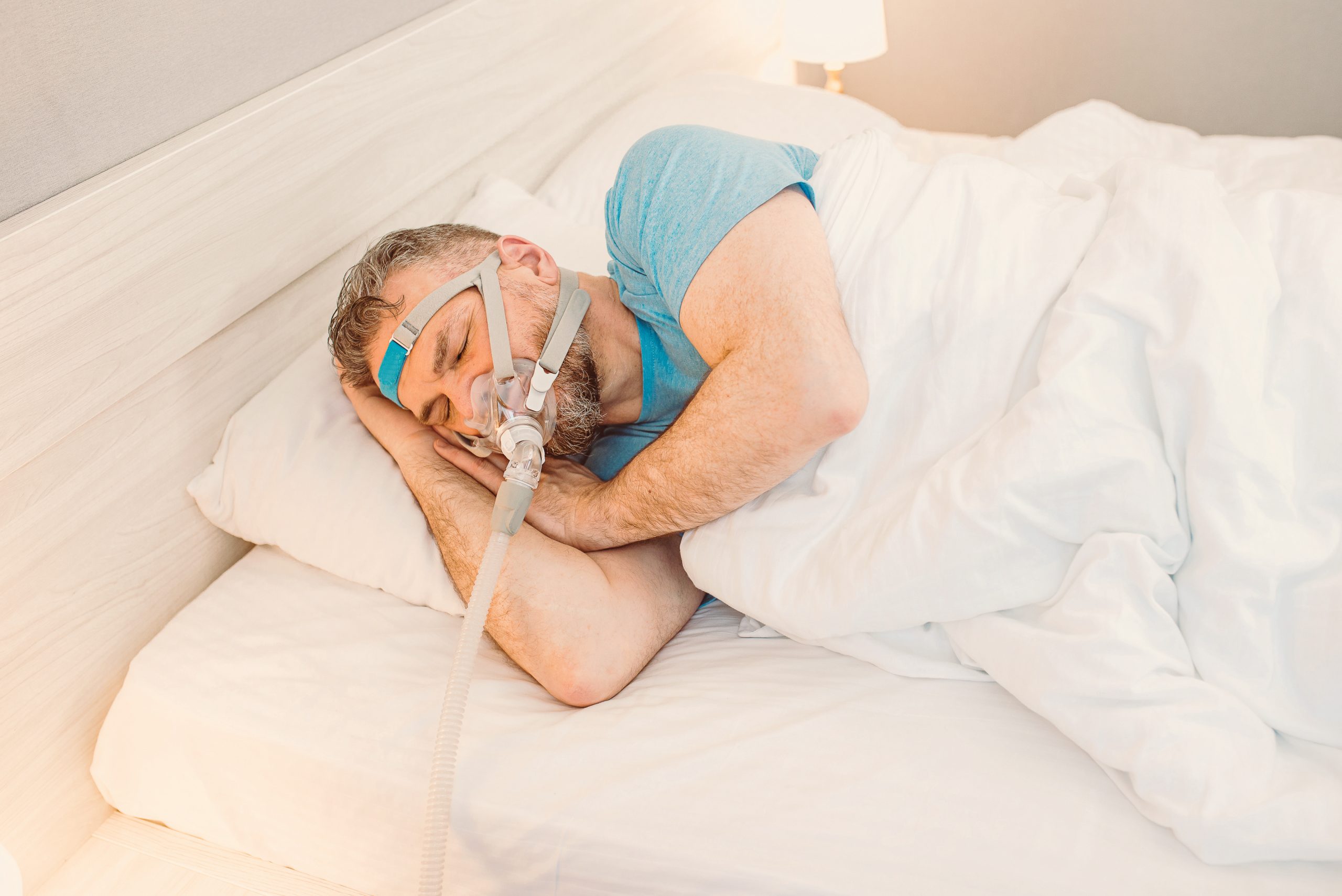Snoring and sleep apnoea affect a great many patients and families in and around Melbourne.
While distinct disorders, some 10% of snorers also have sleep apnoea, which is in turn linked to high blood pressure, heart attack, and stroke.
Overview—What is Snoring?
Snoring occurs when the parts of the throat vibrate during sleep to produce a distinct sound. The pharynx—which sits right behind the tongue—is usually held open by small muscles. But during sleep these muscles relax, the pharynx narrows, and noise-producing vibrations increase.
How Common is Snoring?
Around 40% of men and 30% of women experience at least mild snoring on at least some nights. About 15% of people snore on most nights, and people of any age can snore—even children can experience snoring—but middle-aged people are the most likely to snore.
What Increases the Risk of Snoring?
Being overweight or obese increases fat around the neck, making the throat narrower and more prone to vibration and snoring.
Alcohol relaxes throat muscles, in turn meaning more vibration, more sound, and more severe snoring.
Mouth breathing is positively correlated with snoring—the walls of the throat at the back of the mouth vibrate more easily than those at the back of the nose.
Blocked noses make mouth-breathing more likely, which raises the risk of snoring. They also create a vacuum effect inside the throat, which may pull the walls of the throat closer together.
Sleeping on your back makes the tongue fall backwards, which can get in the way of airflow and make snoring more severe or pronounced.
Nasal polyps can cause narrowing which in turn causes snoring.
Large tongues can also naturally narrow the airway and cause or worsen snoring.
Large tonsils, enlarged thyroids and in children enlarged adenoids can also narrow the airway and cause or worsen snoring.
Allergies, hay fever and smoking can worsen snoring by making it harder for air to flow in and out.
Some medications such as sleeping tablets, anaesthetic drugs, oral steroids and epilepsy drugs can make throat muscles relax and worsen or cause snoring.
Small airways which occur naturally in some people can cause or worsen snoring.
Pregnancy is sometimes associated with snoring.
How Does Snoring Affect People?
Snoring affects people and families in profound ways. The snorer might have to sleep alone in another room, or disrupt the sleep of family members. This in turn can create tiredness during the day, and impact capacity to focus on work or study.
How is Snoring Treated?
A Mandibular Advancement Splint—which pushes the jaw forward—is one form of treatment. The motion creates a wider airway. The splint is specially fitted by a dentist or oral surgeon.
Other treatments reduce vibration by stiffening the roof of the mouth, using lasers, microwave rays or injections. Laser surgery on the throat can work for some people, but can be painful, and is only performed by qualified Ear, Nose and Throat surgeons.
Removing tonsils is a common treatment in children, for whom tonsil enlargement is a common cause of snoring. Often successful, this procedure can also benefits adults with large tonsils.
Surgery can be effective when the shape of the tongue or roof of the mouth, or nose blockage causes snoring.
Positional therapies encourage side-sleeping to treat snoring, but have limited efficacy through the night.
Nasal dilator strips can unblock the nose to some degree, but alone will only lessen the severity of snoring.
Overview—What is Obstructive Sleep Apnoea?
Obstructive sleep apnoea is a sleep disorder which seriously affects the health of patients.
Sleep apnoea causes the walls of the throat to become floppy during sleep, and partially or completely stop airflow to the lungs. This can last from a few seconds to more than a minute. Blood oxygen drops and the brain triggers the body’s wake-up response (called ‘arousal’), just enough to resume normal breathing and then fall asleep immediately. This disruption to sleep can happen well in excess of 30 times per hour, hundreds of times per night.
Obstructive sleep apnoea varies in severity depending on how frequently breathing is stopped. A person with obstructive sleep apnoea may wake frequently, though this is not always the case—most people do not fully awaken and remain unaware anything is happening, but wake feeling tired and worn out, and struggle through the day.
What are the Symptoms of Sleep Apnoea?
Symptoms vary from snoring, tossing and turning, and even gasping for air. Inadequate sleep will ultimately take a toll on health—evidence strongly suggests untreated obstructive sleep apnoea leads to further problems such as hypertension, heart attack, stroke, diabetes and depression.
Sleep apnoea affects mental clarity and mood—impacting both work and home life. Aside from snoring potentially disrupting family sleep, obstructive sleep apnoea can lead to emotional sensitivity and grumpiness, which further impacts family.
What Problems Can Sleep Apnoea Cause?
Sleep apnoea disturbs your sleep & stresses your body—strong evidence links other health problems to the disorder—including risk of high blood pressure, heart attack, stroke, diabetes, depression and accidents. Cognitive function is less clear, mood is affected, and function at work and at home deteriorate.
Obstructive sleep apnoea also increases the risk of accidents in workplaces—including those involving machinery or transport. Sleepy people are at least twice as likely to be involved in a road traffic accident due to their impaired cognitive function—reaction times are slower, alertness is lower and the risk of drowsiness or falling asleep at the wheel is greater.
Who Suffers From Obstructive Sleep Apnoea?
Obstructive sleep apnoea can present at any age. In children enlarged tonsils or adenoids can often be the cause. However obstructive sleep apnoea is most common in middle aged and older men, and post-menopausal women. Obesity and being overweight are implicated in causing obstructive sleep apnoea, as the throat is narrowed by the presence of fatty tissue—also because a large waistline can make lungs smaller at night. For some, the bone structure they are born with causes narrowing or collapsing of the throat.
Diagnosing of Obstructive Sleep Apnoea.
While snoring, breathing pauses (observed by sleeping partners), fatigue, tiredness and poor concentration during the day can indicate a sleep disorder, diagnosis can only be achieved by a medical sleep study. A referral from your GP is necessary for a sleep study. Sleep, breathing, muscle activity and oxygen levels are measured during the study.
Treating Obstructive Sleep Apnoea.
Losing weight, reducing or eliminating alcohol consumption and/or adjusting sleeping position may be all that is required to treat mild obstructive sleep apnoea.
Moderate or severe obstructive sleep apnoea will usually require further treatment—particularly where daytime sleepiness or cardiovascular conditions are persistent. The two most common methods of treating moderate to severe obstructive sleep apnoea are CPAP machines and oral appliances.
A CPAP (Continuous Positive Airway Pressure) machine is a small, quiet air pump that holds your throat open by gently pushing air through a nose mask into your airways. Although many people worry about being able to tolerate CPAP, it is generally well tolerated with most people getting used to it within 2 weeks. CPAP is very effective at mitigating the symptoms and long term effects of obstructive sleep apnoea.
Oral appliances (mandibular advancement splints) are fitted to both upper and lower jaw—similar to a double mouthguard. It clips together, bringing and holding the jaw forward during the night, keeping the airway open. Oral appliances are most effective for snoring and mild forms of obstructive sleep apnoea.
Where neither CPAP nor oral appliances have proven effective, surgery may be required. There are several surgical options and the most appropriate would be determined by a specialist surgeon.









